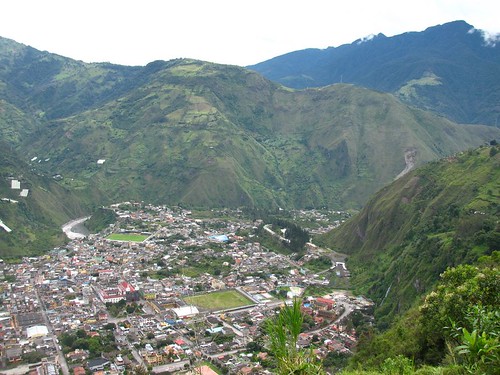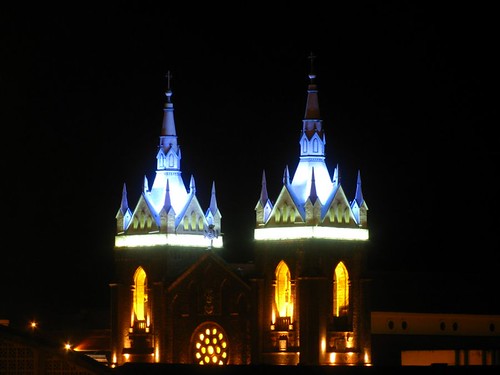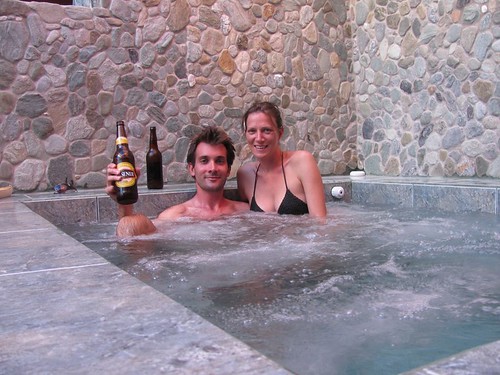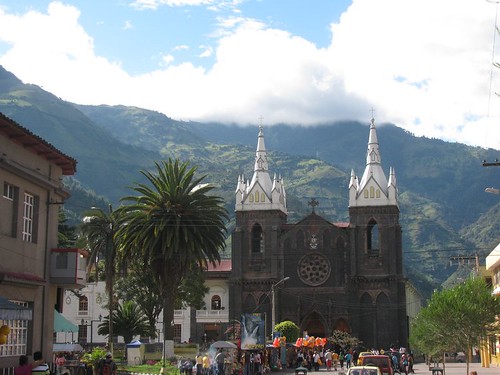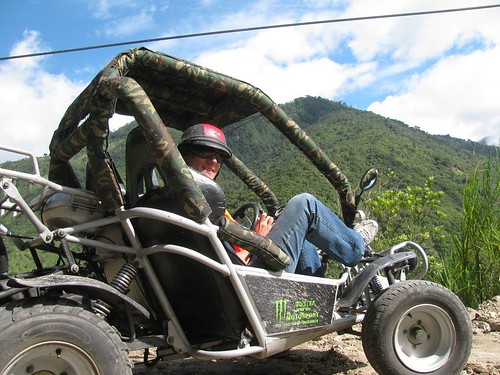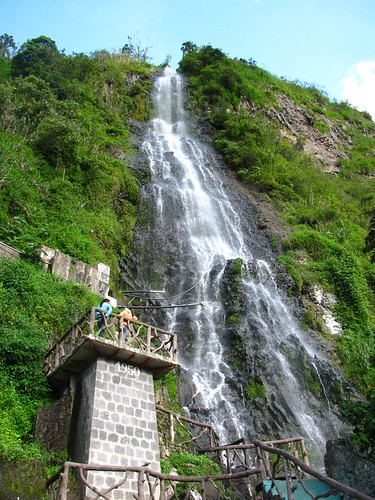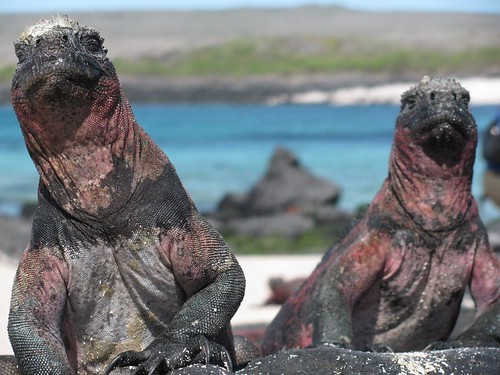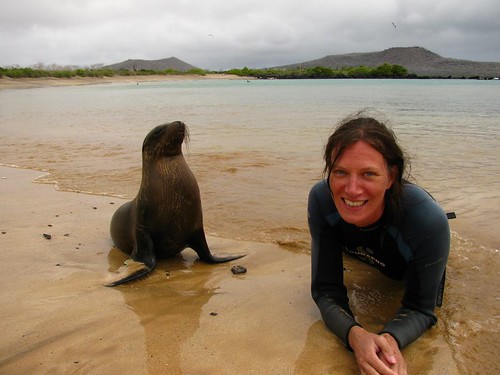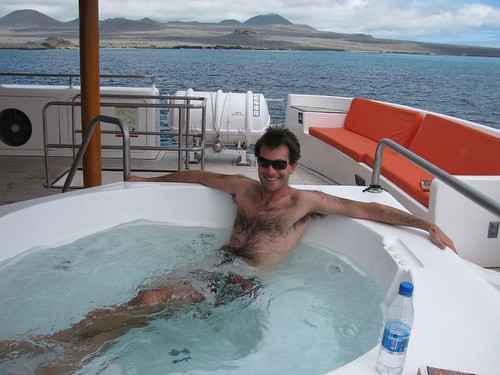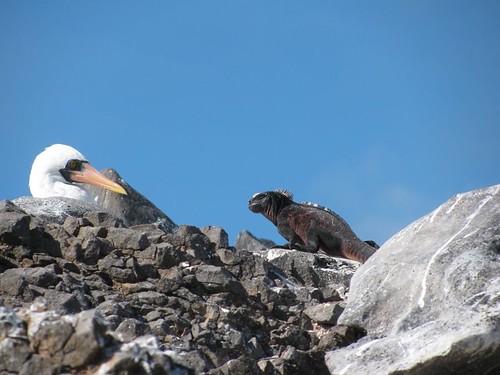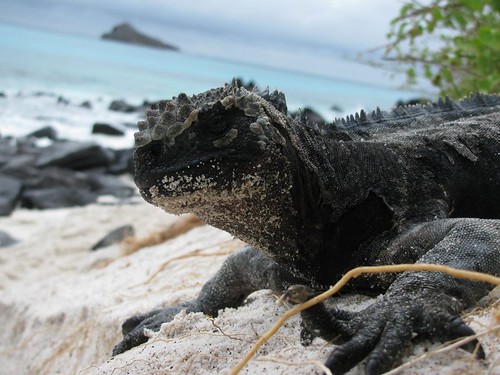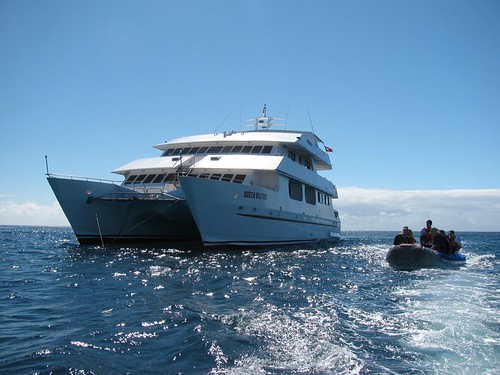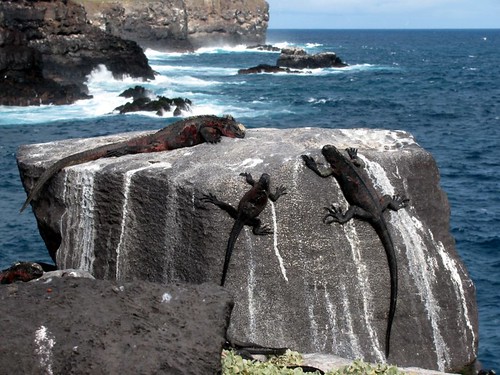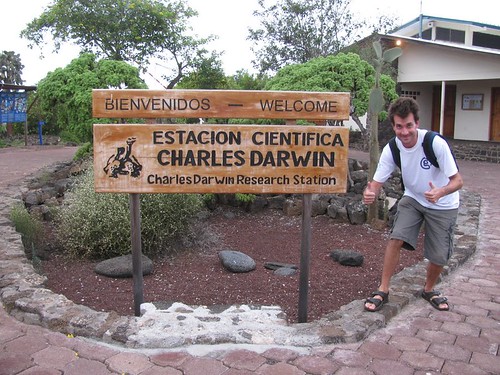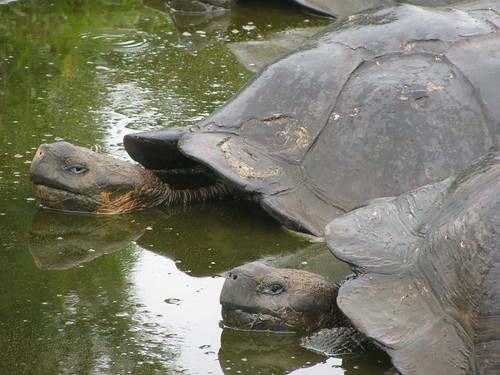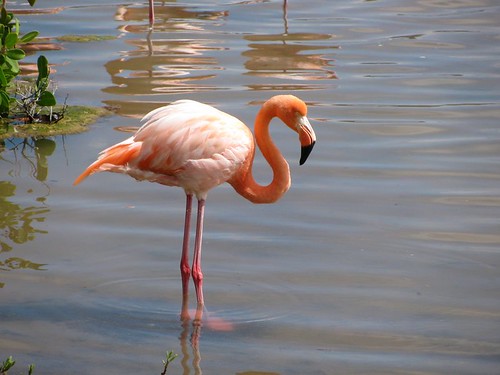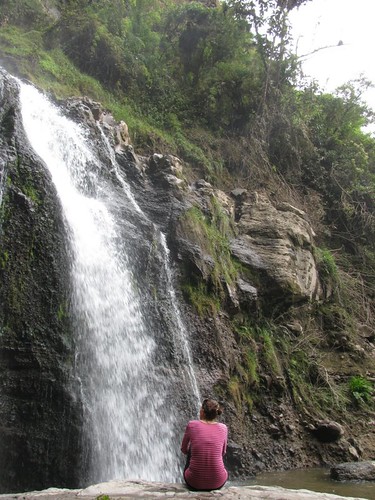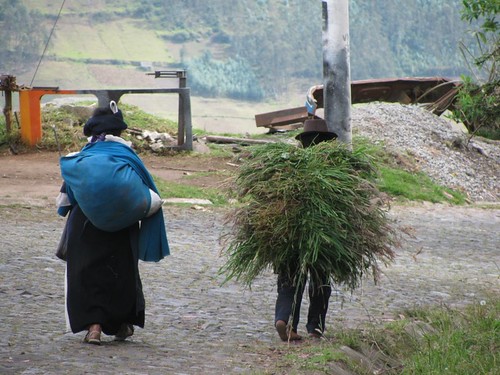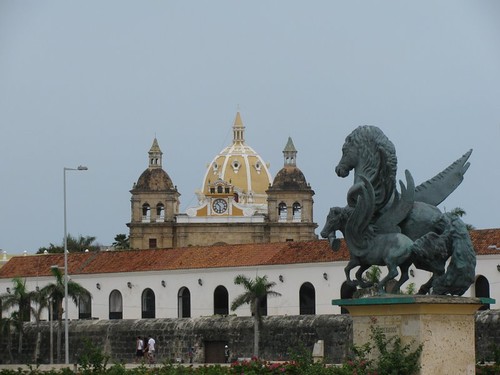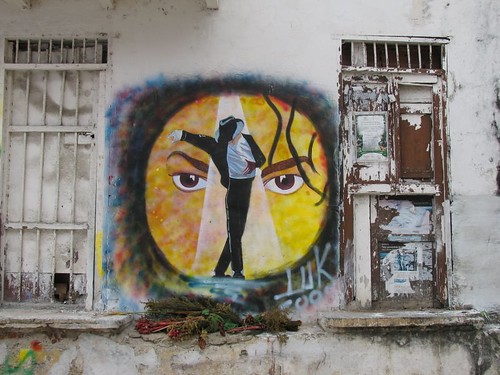Today we visited the equator. Well in fact we visited three “equators” – one legitimately incorrect, one deliberately fake, and the real thing which runs next to a major road and through a pile of dust, litter and rocks that happened to be vacant land for sale. For sale at a high price, I imagine, given the tourist dollars at stake.
The whole day was a slightly surreal experience for a geo-nerd like myself. What surprises me is just how few people have bothered to trot through there with a GPS and expose the Intiñan Solar Museum – claiming to straddle the true equator – for the fraud that it is.
Let’s start with the official monument. An impressive stone obelisk structure constructed around 27 years ago, housed in the middle of a very well serviced touristy fun park complete with multiple restaurants, museums and a planetarium.
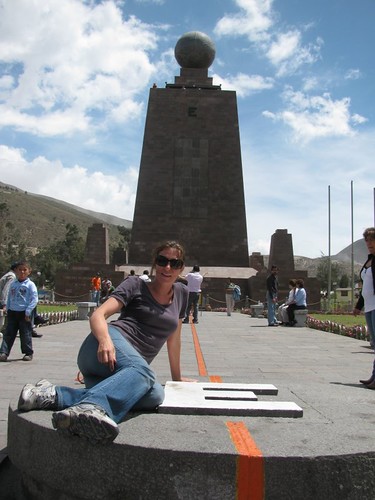
It’s common knowledge that this monument is located 240m south of the true equator, something which my GPS – showing 0.00216 degrees south – agreed with exactly:

Given it’s 27 year age, dating back well before the commercial availability of GPS, they did a pretty good job in choosing its location. I can also forgive them for failing to mention anywhere that this isn’t the real thing, letting throngs of tourists happily think they’re jumping between the northern and southern hemispheres.
So we move onto the “real” equator, the Intiñan Solar Museum described by Lonely Planet as being next door, and “supposedly on the site of the real equator”.
They’re certainly not bashful with their claims, sporting multiple large signs assuring visitors that this is the “real equator as calculated with GPS”.
Being a natural skeptic, I knew something was amiss as soon as we walked up to the entrance. We were still a good 130m south of 00°00′00”. Suspicions were soon confirmed once I stood on their theatrically adorned equatorial line. No dice:

The tour guides here have indulged in range of “experiments” to demonstrate the mystical properties of the equatorial line, including the famous (and repeatedly debunked) anti/clockwise water draining one, as well some more patently ridiculous ones involving balancing eggs and humans becoming mysteriously weak when standing on the equator.
These became even more amusing once we let our guide know that we were onto their dirty little secret of being over 100m south of the real deal.
Our guides’ first line of defense was the recommendation that we “need to use code 69 for our GPS when in South America” for it to give a correct reading. A classic “baffle them with bullshit” approach. He then assured us that our commercial GPS was inaccurate and that their location had in fact been confirmed by the US Army with military grade GPS equipment.
US Army? Really?
Not only that, but the US Army had issued them with a certificate stating that they are indeed located on the true equator.
The US Army… verifying the location of a privately owned tourist trap, and then issuing them a certificate? This guy was an absolute classic, though I guess he was just following the script. I asked if we would get to see the certificate at the end of the tour, and he confirmed that yes, we would.
I really looked forward to snapping a photograph of this certificate!
Sadly, though, at the end of the tour, when I asked to see the certificate, he apologized and said “the certificate is in my bosses house, so I can’t get it because he’s not here”.
Nice. So we returned hit the road again for our final search. We’d been looking for the real equator for a few hours at this point, and I for one was quite excited at actually getting there.
The result was, though, sadly underwhelming:

Turns out the real line runs through a vacant plot of land, out on a fairly inconvenient angle across the highway. The land is, of course, for sale.

Interestingly the plot is adjacent to both the official monument (you can see it in the above photo), and another plot of land owned by the Intiñan charlatans, used for bus and car parking. I expect they’re both trying to get their hands on it so that maybe, just maybe, the truth can be revealed to the tourist masses. For a modest sum of course.

So far I’ve only managed to locate one other fellow geo-nerd who has been here and verified this. Our co-ordinates are in agreement, as is Google’s satellite imagery. This is the real equator.
